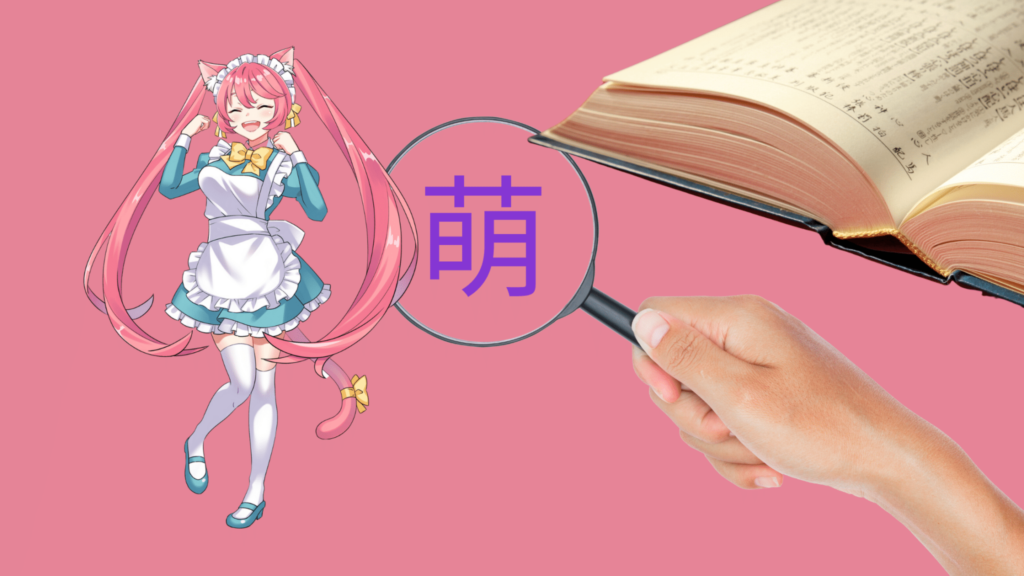[ad_1]
Traveling to Japan? Get some Japanese under your belt today with Rocket Languages Japanese! Use code UNSEEN60 for $60 or more off your purchase! (affiliate link)
Dai Kan-Wa Jiten was an endeavor so monumental that Morohashi was decorated by the Japanese government with the Order of the Chrysanthemum in 1957 and the Order of Culture in 1965. It has entries for over 50,000 characters.
But what are some noteworthy examples of hyōgai kanji that you might already be familiar with? Here are a few for your consideration.
Some Examples
Arguably the best-known hyōgai kanji in modern pop culture is 萌. This is moe, the ubiquitous anime concept of cuteness or crushing on a character. Interestingly, it’s also the verb for “to sprout.” Those familiar with kanji will perhaps be less surprised by this– it has the grass radical 艹 on the top.
Taka 鷹 is one I know because of its historical usage. One of the common pastimes of daimyo in the Edo period was falconry, whose Japanese name– takagari 鷹狩– uses this kanji. Today, however, this kanji is perhaps best known for the toponym Mitaka 三鷹, one of the cities in Tokyo metropolis. It shares its name with Mitaka Station, a JR East rail station in the city.
Ame 飴 is a kanji you might know from Japanese confectionery. At a glance, it might be easily confused with 餅、the kanji for “mochi.” Ame roughly corresponds to candy, rather than baked goods. A famous example is that of 金太郎飴、candy whose cross section depicts the folk hero Kintarō. But be careful to not be called Kintarō-ame like, as that’s equivalent to calling someone a cookie-cutter rendition or a carbon copy.
喋 is shaberu– something that’s common in spoken Japanese, as it means “to chat.” In written form, one often encounters it rendered in hiragana, but yes, it does indeed have a kanji form. Be careful you don’t write this in katakana, though, as that’s the transliteration of “shovel.”
絆 is another one that is a familiar enough term in spoken Japanese, but perhaps a bit less commonly known in its kanji form. Kizuna is the term– connecting bonds, the ties between people. The radical to the left– “thread” 糸– is a clue for how to recognize it.
Finally, fascinatingly, is the kanji 嘘. The word is simple enough, and common enough– “uso,” meaning “lie.” But ordinarily, one encounters it in hiragana rather than kanji form. Still, it does have a kanji form– and that, you can rest assured, is no lie.
Conclusion
What is and isn’t jōyō kanji is constantly evolving. It will continue to evolve, as the Japanese language itself evolves and changes. But jōyō kanji are ultimately decreed by the government. And as these hyōgai kanji show us, there’s no shortage of other kanji that remain regularly used.
Works Cited
- “Kaijō Jōyō Kanjihyō, 30nichi ni Naikaku Kokuji, Kakugi de Seishiki Kettei.” Nihon Keizai Shinbun, 24 November 2010. Accessed 26 July 2023.
- Kennedy, George A. “Dai Kanwa Jiten [The Great Chinese-Japanese Dictionary]. Vol. I. By Morohashi Tetsuji. Tokyo: Dai Shūkan Shoten, 1955. v, Vii, x, Iii, 1082.” The Journal of Asian Studies 16, no. 2 (1957): 306–7. doi:10.2307/2941401.
- “Morohashi Tetsuji to Kinenkan ni Tsuite.” Kangaku no Sato Morohashi Tetsuji Kinenkan. Accessed 26 July 2023.
- Yuko Naito. “Japanese Legend’s Sweetest Hero.” The Japan Times, 18 March 2000, accessed 26 July 2023.
- “Tōyō Kanji hyō” Showa 21, 5 November. Agency for Cultural Affairs, Government of Japan. Accessed 26 July 2023.
- “Ukkari Shiyō Shiteshimaigachi na Jōyōgai kanji (Hyōgaiji) Ichiran” Voxt.jp, 19 March 2015. Accessed 26 July 2023.
[ad_2]
Source link


